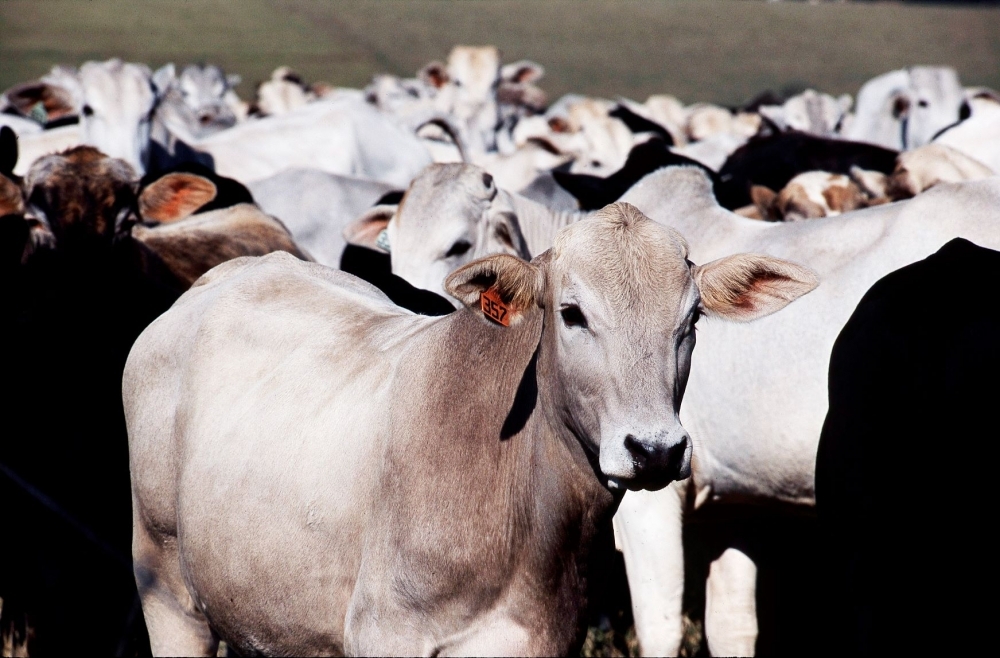

Article by Brazilian researchers published in Biology of Reproduction reveals novel mechanisms involved in female gamete maturation (photo: Eduardo Cesar / Pesquisa FAPESP)
Article by Brazilian researchers published in Biology of Reproduction reveals novel mechanisms involved in female gamete maturation.
Article by Brazilian researchers published in Biology of Reproduction reveals novel mechanisms involved in female gamete maturation.

Article by Brazilian researchers published in Biology of Reproduction reveals novel mechanisms involved in female gamete maturation (photo: Eduardo Cesar / Pesquisa FAPESP)
By Maria Fernanda Ziegler | Agência FAPESP – The results of a study conducted in Brazil at the University of São Paulo (USP) in Pirassununga could contribute to a rise in the proportion of successful in vitro fertilization (IVF) procedures used in cattle reproduction. IVF entails harvesting oocytes (immature egg cells) from donor cows and creating embryos by fertilizing the oocytes with semen in the laboratory.
The project was supported by FAPESP. The results were published in the journal Biology of Reproduction.
According to the authors, only 35%-45% of bovine oocytes reach the blastocyst stage (the development stage prior to embryo implantation) in IVF. Maturation rates are higher in natural reproduction.
The authors say a possible solution to the problem may lie with the extracellular vesicles secreted by ovarian follicle cells. To their knowledge, this is the first study to show that the content of microRNAs present in extracellular vesicles changes depending on the stage of the cow’s estrous cycle.
MicroRNAs, or miRNAs, are small RNA sequences that do not encode proteins but can act as regulators of gene expression in several intracellular differentiation processes. The content of the extracellular vesicles secreted in the follicular fluid can influence biological processes that are critically important to the success of assisted reproduction.
“Our findings could have a clear impact on bovine reproduction and help improve the ovarian follicle aspiration protocols used by vets in the field,” Juliano Coelho da Silveira, a professor at the University of São Paulo’s School of Animal Science and Food Engineering (FZEA-USP), told Agência FAPESP.
According to Silveira, the oocyte’s RNA content was previously believed to stay the same throughout the follicular growth process, but the study showed that the endocrine environment in which the ovarian follicles develop can alter the content of extracellular vesicle miRNAs and hence regulate gene expression in the cells that assist in oocyte maturation and follicular development (cumulus-oocyte complexes).
“These vesicles can be released or incorporated into the maturing cumulus-oocyte complexes, so they can modify the biological pathways in these structures to produce oocytes of better quality,” Silveira said.
Extracellular vesicles are a previously unknown pathway for cellular communication, he added. They are involved in various physiological processes and influence IVF success rates.
“It appears that failure to reach the blastocyst stage may have something to do with the fact that in vitro conditions don’t mimic the natural follicular environment,” he said.
Cellular communication
The study led by Silveira showed that cells communicate actively during oocyte development. “Communication occurs even in stages during which we thought it was nonexistent,” he said.
The bovine ovarian cycle comprises several stages, which are controlled by variations in hormones such as progesterone, estradiol, insulin and insulin-like growth factors (IGFs), as well as their receptors, which affect the follicular microenvironment.
In this study, the miRNA content was analyzed in extracellular vesicles isolated from the follicular fluid that surrounds the developing oocyte and facilitates intercellular communication. The vesicles were collected at different stages of the ovarian cycle and with different levels of progesterone in the fluid.
“We observed that extracellular vesicles in the group of follicles exposed to low levels of progesterone had a greater abundance of certain miRNAs that we believe to be associated with the modulation of several factors, such as RNA transport, the cell cycle, and oocyte meiosis, for example, thus affecting oocyte development and quality,” Silveira said.
Although the study used bovine gametes, the researchers believe the same phenomenon probably occurs in humans, as the vesicles are also present in human follicular fluid.
“In the case of the in vitro production of human embryos, this communication between cells isn’t normally taken into account, so our findings aren’t just relevant for cattle breeders but may also represent an important step in improving human assisted reproduction,” he said.
The article “Estrous cycle impacts microRNA content in extracellular vesicles that modulate bovine cumulus cell transcripts during in vitro maturation” can be retrieved from academic.oup.com/biolreprod/advance-article-abstract/doi/10.1093/biolre/ioz177/5556620?redirectedFrom=fulltext.
Republish
The Agency FAPESP licenses news via Creative Commons (CC-BY-NC-ND) so that they can be republished free of charge and in a simple way by other digital or printed vehicles. Agência FAPESP must be credited as the source of the content being republished and the name of the reporter (if any) must be attributed. Using the HMTL button below allows compliance with these rules, detailed in Digital Republishing Policy FAPESP.





